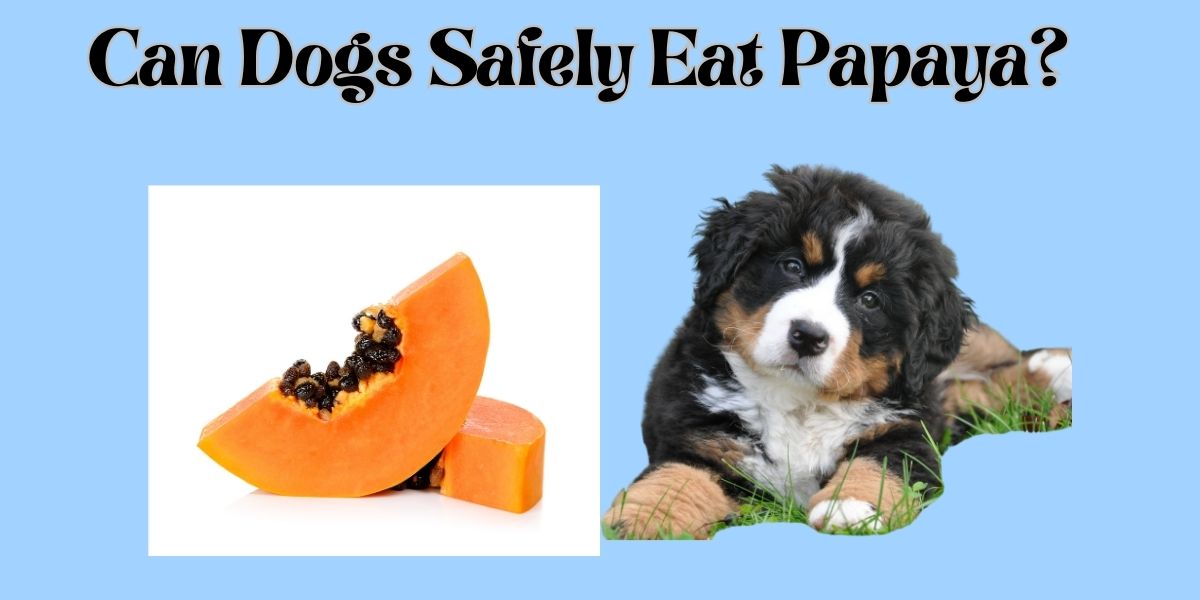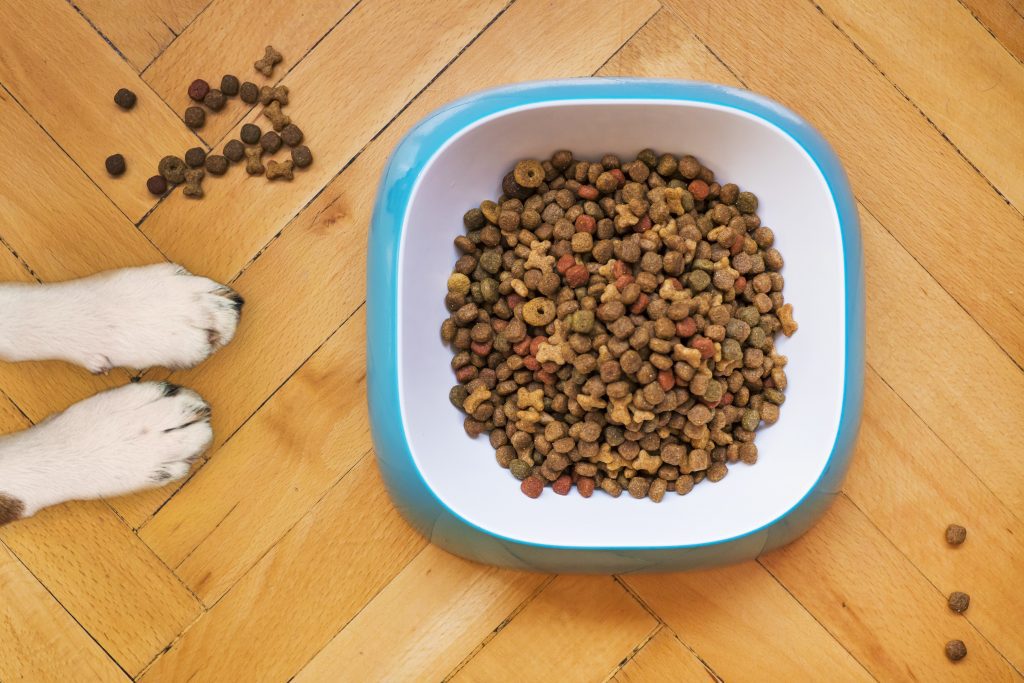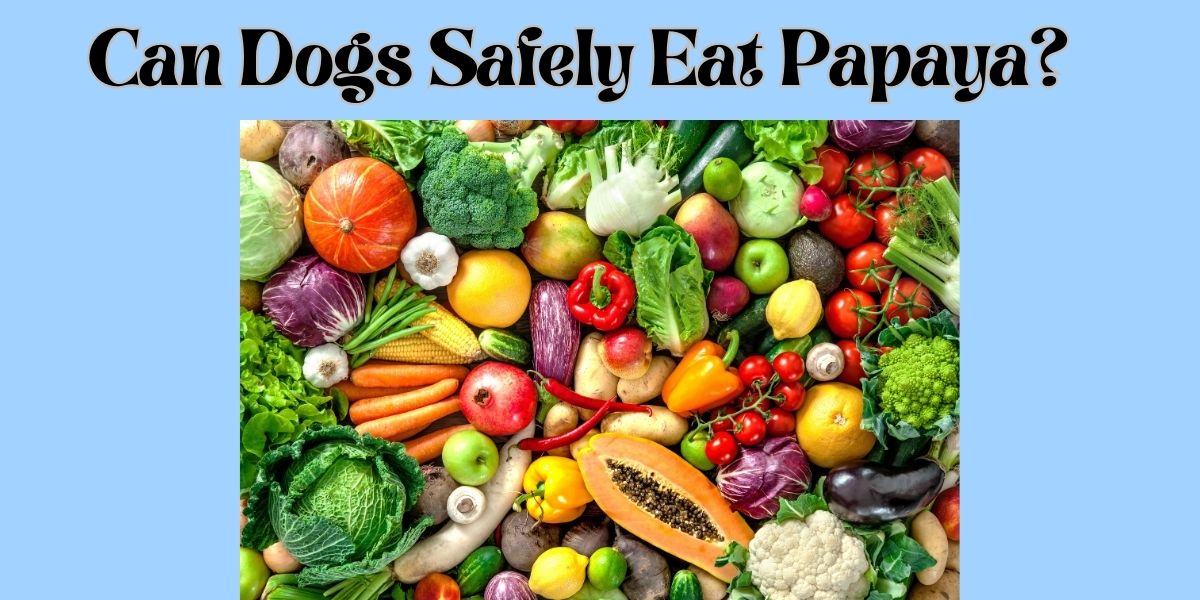Can Dogs Safely Eat Papaya?

If you’ve ever wondered whether it’s safe for your furry friend to indulge in the tropical goodness of papaya, you’re not alone. As a devoted dog owner, you want to ensure that every treat you offer is both delicious and healthy. Thankfully, the answer to the question, “Can dogs safely eat papaya?” is a resounding YES! Packed with essential nutrients and vitamins, papaya can be a nutritious addition to your dog’s diet, providing numerous health benefits. However, as with any new food, it’s essential to introduce it gradually and in moderation to avoid any adverse reactions. So, let’s explore the marvelous world of papaya and discover why it can be a safe and delightful treat for your beloved canine companion.
Benefits of Papaya for Dogs
Rich in vitamins and minerals
Papaya is a tropical fruit that is not only delicious for humans but can also provide numerous health benefits for dogs. One of the main advantages of feeding papaya to your furry friend is its richness in essential vitamins and minerals. Papaya is packed with vitamin C, vitamin A, vitamin E, and folate, all of which are crucial for maintaining your dog’s overall well-being. These vitamins play a vital role in boosting your dog’s immune system, promoting healthy skin and coat, and supporting various bodily functions.
Good for digestion
Another great benefit of papaya for dogs is its ability to improve digestion. Papaya contains an enzyme called papain, which aids in the breakdown of proteins and helps in the digestion process. This can be especially beneficial for dogs with sensitive stomachs or those who suffer from occasional digestive issues. By incorporating papaya into your dog’s diet, you can help promote regular bowel movements and alleviate constipation or other digestive discomforts.
Supports immune system
Papaya is known for its high concentration of antioxidants, which help fight against free radicals and strengthen the immune system. By providing your dog with papaya, you can help enhance their natural defenses, making them less susceptible to illnesses and infections. A robust immune system is crucial for dogs of all ages, as it plays a vital role in maintaining their overall health and vitality.
Promotes healthy skin and coat
If your furry friend is struggling with dry, itchy skin or a lackluster coat, incorporating papaya into their diet may offer some relief. Papaya contains essential nutrients like vitamin A, which is known for its skin-enhancing properties. By regularly feeding papaya to your dog, you can promote a healthy and shiny coat, as well as alleviate common skin issues such as dryness, dandruff, or hot spots.
Potential Risks of Feeding Papaya to Dogs
Allergic reactions
While papaya is generally considered safe for dogs, it is important to be aware of the potential risk of allergic reactions. Some dogs may be allergic to papaya or certain compounds present in the fruit. If you notice any signs of an allergic reaction in your dog, such as itching, swelling, hives, or difficulty breathing, it is crucial to stop feeding papaya immediately and consult with your veterinarian.
Digestive issues
Although papaya can aid in digestion for most dogs, some individuals may experience digestive issues when consuming excessive amounts of the fruit. The high fiber content in papaya can lead to loose stools or diarrhea if given in large quantities. It is recommended to introduce papaya gradually into your dog’s diet and monitor their digestive response. If you notice any digestive discomfort, such as bloating or gas, reduce the amount of papaya being fed or discontinue its use altogether.
Obstruction in the intestines
The seeds of a papaya can cause obstructions in a dog’s intestines if ingested in large quantities. It is important to remove all seeds from the papaya before feeding it to your dog. Additionally, ensure that the papaya is diced into small, easily digestible pieces. Be vigilant when offering any potential choking hazards to your dog, especially when introducing new foods into their diet.

Preparing Papaya for Dogs
Choose ripe papaya
When preparing papaya for your dog, it is essential to choose ripe fruit. Ripe papaya will have a vibrant yellow-orange color and yield slightly when gently pressed. Avoid giving your dog unripe or green papaya, as it can be more challenging to digest and may not provide the same nutritional benefits.
Wash and peel the fruit
Before serving papaya to your dog, make sure to thoroughly wash the fruit to remove any dirt or potential pesticides. It is also important to remove the outer skin or peel, as it can be tough and difficult to digest for dogs. The inner flesh of the papaya is what contains the beneficial nutrients and enzymes that can benefit your furry friend.
Remove seeds and dice into small pieces
As mentioned earlier, the seeds in a papaya can be a potential choking hazard and may cause obstructions in your dog’s intestines. Carefully scoop out and discard all the seeds before offering papaya to your dog. Afterwards, dice the papaya into small, bite-sized pieces that are easy for your dog to eat and digest. This will help prevent any discomfort or potential digestive issues.
Feeding Papaya to Dogs
Start with small amounts
When introducing papaya to your dog’s diet, it is important to start with small amounts and observe their reaction. Begin by offering a small piece and monitor for any signs of allergic reactions or digestive issues. If your dog tolerates papaya well, gradually increase the amount over time. Remember, moderation is key when it comes to including any new food in your dog’s diet.
Observe for any adverse reactions
As with any new food, it is crucial to closely observe your dog for any adverse reactions after introducing papaya. Keep an eye out for symptoms such as itching, vomiting, diarrhea, or changes in behavior. If you notice any concerning signs, discontinue feeding papaya and consult with your veterinarian.
Incorporate into regular meals or use as a treat
Once your dog has shown a positive response to papaya, you can incorporate it into their regular meals or use it as a healthy and tasty treat. Adding small amounts of diced papaya to your dog’s food can provide additional nutrients and flavors. Alternatively, you can freeze small pieces of papaya for a refreshing and nutritious snack on hot summer days.

Health Conditions
Consult with a veterinarian
If your dog has existing health conditions or is currently on medication, it is essential to consult with your veterinarian before adding papaya to their diet. Some health conditions may require dietary restrictions that may conflict with the introduction of certain foods. Your vet will be able to provide personalized advice and determine if papaya is suitable for your dog’s specific needs.
Consider dog’s overall health
Before incorporating papaya or any new food into your dog’s diet, it is important to consider their overall health. While papaya can offer various benefits, it should not be relied upon as a cure-all solution. A balanced diet, regular exercise, and routine veterinary care are all essential components of maintaining your dog’s health and well-being.
Moderation is key
While papaya can provide health benefits, it is crucial to remember that moderation is key. Like any food, excessive consumption of papaya can lead to an imbalance in your dog’s diet and potentially cause digestive issues. Always feed papaya in moderation and as part of a well-balanced diet.
Avoid giving papaya to dogs with specific health issues
There are specific health conditions in dogs that may warrant avoiding the inclusion of papaya in their diet. Dogs with diabetes or pancreatitis may need to avoid high-sugar fruits like papaya. Additionally, dogs with kidney disease or gastrointestinal disorders may require specialized diets that restrict certain fruits. It is important to follow your veterinarian’s guidance and recommendations based on your dog’s individual health needs.
Alternatives to Papaya for Dogs
Other fruits safe for dogs
If papaya is not a suitable option for your dog or you are looking to provide a variety of fruits, there are alternatives that are safe and beneficial for dogs. Some fruits that are generally safe for dogs to consume in moderation include apples, bananas, blueberries, strawberries, and watermelon. Always ensure that the fruits are thoroughly washed and prepared before offering them to your dog.
Vegetables suitable for canine consumption
In addition to fruits, there are also several vegetables that are safe and nutritious for dogs. Carrots, green beans, sweet potatoes, and spinach are all examples of vegetables that can be included in your dog’s diet. These vegetables provide essential vitamins and minerals while adding variety to their meals. As with fruits, make sure to prepare vegetables properly and offer them in appropriate serving sizes.

Overall Diet and Nutritional Balance
Papaya should be a supplement, not a replacement
While papaya can offer numerous health benefits, it should always be viewed as a supplement to your dog’s overall diet, not a replacement for a nutritionally balanced meal. Commercially available dog food is specifically formulated to provide the necessary nutrients that dogs require. Consult with your veterinarian to ensure that your dog’s diet is properly balanced and meets their specific nutritional needs.
Ensure a balanced diet
A balanced diet is key to your dog’s overall health and well-being. In addition to incorporating papaya or other fruits and vegetables, it is important to provide your dog with a well-rounded diet that includes high-quality protein, appropriate fats, and carbohydrates. Your veterinarian can guide you in selecting the right food and helping you create a balanced meal plan for your furry friend.
Consult a veterinarian for a suitable feeding plan
Every dog is unique, with different nutritional requirements and health considerations. It is recommended to consult with your veterinarian to develop a suitable feeding plan for your dog. They can assess your dog’s specific needs, take into account any health conditions or dietary restrictions, and provide guidance on incorporating papaya or other foods into their diet effectively.
Popular Dog-Friendly Recipes with Papaya
Papaya and chicken frozen treats
A refreshing and delightful treat for your furry friend can be made by blending ripe papaya with cooked chicken. Simply dice the papaya and cooked chicken into small pieces, then puree them together until smooth. Pour the mixture into ice cube trays or silicone molds and freeze until solid. These frozen treats can be a tasty way to keep your dog cool in the summer months, and the papaya adds a burst of flavor and nutrition.
Papaya and yogurt smoothie
For a nutritious and creamy smoothie, combine ripe papaya with plain yogurt in a blender. Blend until smooth and pour into a dog-friendly bowl. You can add a touch of honey for sweetness, but make sure the honey is suitable for dogs and given in moderation. Serve this smoothie as a refreshing snack or an occasional meal to provide your dog with a boost of vitamins and probiotics.
Papaya and banana pupcakes
If you enjoy baking for your dog, consider making papaya and banana pupcakes for a special occasion or just to spoil them. In a mixing bowl, mash ripe bananas and finely dice papaya. Add dog-friendly flour, such as whole wheat or oat flour, and an egg. Mix until well combined, then pour the batter into cupcake liners. Bake in a preheated oven according to the recipe instructions. These pupcakes can be a delicious and nutritious treat, with the papaya adding a natural sweetness and beneficial nutrients.
Conclusion
In conclusion, papaya can be a fantastic addition to your dog’s diet, providing numerous benefits such as being rich in vitamins and minerals, aiding digestion, supporting the immune system, and promoting healthy skin and coat. However, it is crucial to consider the potential risks, such as allergic reactions, digestive issues, and the risk of intestinal obstruction if seeds are consumed. It is also important to prepare papaya properly by choosing a ripe fruit, washing and peeling it, removing seeds, and dicing it into small, digestible pieces.
When feeding papaya to your dog, start with small amounts, observe for any adverse reactions, and incorporate it into regular meals or use it as a treat. Always take into account your dog’s overall health, consult with a veterinarian, and ensure moderation in feeding papaya. If papaya is not suitable for your dog, there are alternative fruits and vegetables that can offer similar benefits.
Remember, papaya should be viewed as a supplement to your dog’s overall diet and should not replace a nutritionally balanced meal. Consult with your veterinarian to ensure your dog’s diet is well-balanced, and consider popular dog-friendly recipes to incorporate papaya in a fun and tasty way. By taking necessary precautions, monitoring for any adverse reactions, and consulting with a vet when needed, you can safely introduce papaya and enhance your dog’s well-being.